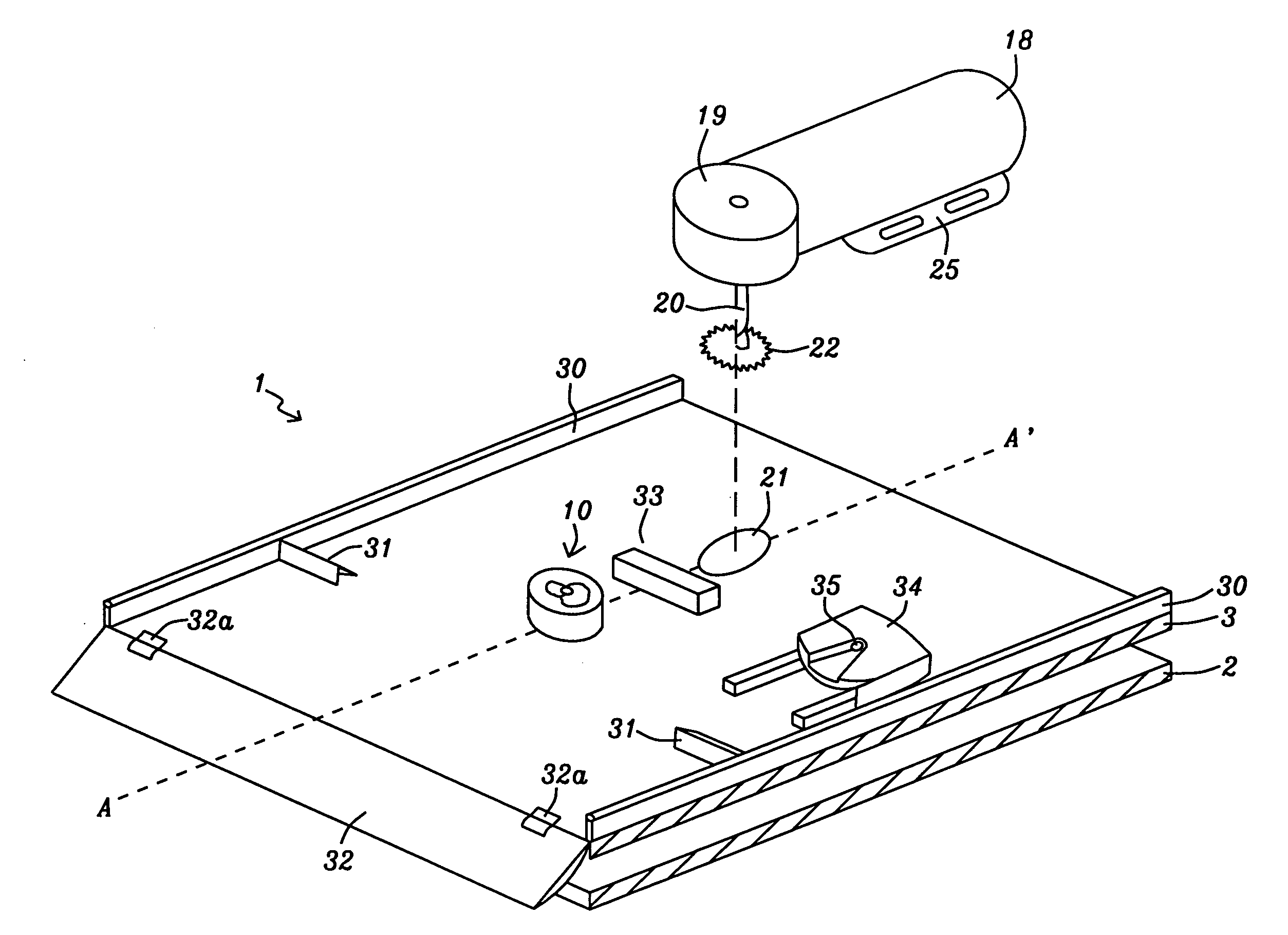Rotating platform from wheelchair bound people
a technology for turning tables and wheelchairs, which is applied in the direction of wheelchairs/patient conveyances, machine supports, other domestic objects, etc., can solve the problems of insufficient safety considerations, difficult maneuverability in tight quarters, and insufficient consideration of modern, motorized and therefore heavy wheelchair applications
- Summary
- Abstract
- Description
- Claims
- Application Information
AI Technical Summary
Benefits of technology
Problems solved by technology
Method used
Image
Examples
Embodiment Construction
[0026]A preferred embodiment of this invention is illustrated in FIGS. 1-3. Referring first to FIG. 1, there is shown a platform 1 consisting of a stationary base plate 2 and a rotatable top plate 3. Plates 2 and 3 are preferably constructed of aluminum and have a thickness of ⅜ inch or thereabout and dimensions of about 2 feet in width and about 3 feet in length. These dimensions are determined by the size of the wheelchair to be accommodated. Alternatively, the plates 2 and 3 could be constructed of titanium or magnesium. The bottom (stationary) race 6 of a large circular ring thrust bearing 4, shown in phantom in FIG. 2 and in cross-section in FIG. 3, is secured to the bottom plate 2 by screws 6a. The upper plate 3 rests upon nylon, or alternately Teflon, pads 5 (shown in FIG. 3) which are fastened onto the top race 7 of the thrust bearing 4 with an adhesive.
[0027]The thrust bearing has a weight capacity of about 850-1000 pounds and is only about ¾ inches in height. The large bea...
PUM
 Login to View More
Login to View More Abstract
Description
Claims
Application Information
 Login to View More
Login to View More - R&D
- Intellectual Property
- Life Sciences
- Materials
- Tech Scout
- Unparalleled Data Quality
- Higher Quality Content
- 60% Fewer Hallucinations
Browse by: Latest US Patents, China's latest patents, Technical Efficacy Thesaurus, Application Domain, Technology Topic, Popular Technical Reports.
© 2025 PatSnap. All rights reserved.Legal|Privacy policy|Modern Slavery Act Transparency Statement|Sitemap|About US| Contact US: help@patsnap.com



